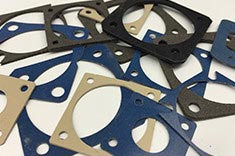EMI Shielding Products
- Custom Gasket Fabrication
- Connector Gaskets
- Bonded O Ring
- Custom Gaskets
- Conduct-O-Knit Knitted Wire Mesh
- Conduct-O-Seal Combo Gasket
- Conduct-O-Elastomer
- Conduct-O-Seal Oriented Wire in Silicone Gasket Material
- Conduct-O-Mesh Tape
- Conduct-O-Foam
- Conduct-O-Bond
- Optical Filters For Electronic Displays
- Shielded Vent Panels
- ESC Board Level Shielding
- 300 Series
EMI shield Effectiveness Testing
The modern world has a proliferation of small and large electronic devices and systems that are all susceptible to electromagnetic interference. EMI should be a significant concern for any electronics manufacturer because electronics emit EMI, and equipment will be negatively affected when exposed to external EMI sources. When this type of energy interacts unintentionally with other devices, it can cause malfunctions. EMI is typically within a range of 1 kilohertz – 10 gigahertz. This range is referred to as an RFI band (including audio and radio frequencies). The most common source of interferences comes from motors, televisions, and radar transmitters. EMI shielding is used to prevent EMI leakage and to prevent unwanted EMI from entering devices.

It is crucial that manufacturers test the effectiveness of their shields. Several standard tests can be employed to find out the exact results.
The most commonly used method is the open field test, which is designed to simulate typical use conditions (as closely as possible). Antennae are used, at varying distances from the device, in areas that have no metallic materials beside the testing equipment. This test must be done in an open site that allows for free space measurements of conductive emissions and radiated field strength. A noise level meter is used to detect the amount of EMI produced. This testing method is often used for finished electronic products.
Other testing methods include:
- Coaxial transmission line test
- Shielded box test
- Shielded room test
EMI shielding
For more information on EMI shielding tests, you should give our team a call. We handle all EMI gasket and shielding needs.
Related Reading for EMI shielding
- Three Most Common Questions about EMI ShieldingIf you have any specific questions about EMI shielding and your electronics, you shouldn’t hesitate to give our team a call. We specialize in creating custom EMI gaskets and EMI shields.
- Consideration for EMI Gasket Design
- Understanding How EMI and Electronic Devices Work Together
- Reduce Production Time and Cost when Partnering with Eastcoast Shielding
- Different Emi Shielding and EMI Gasket Types



